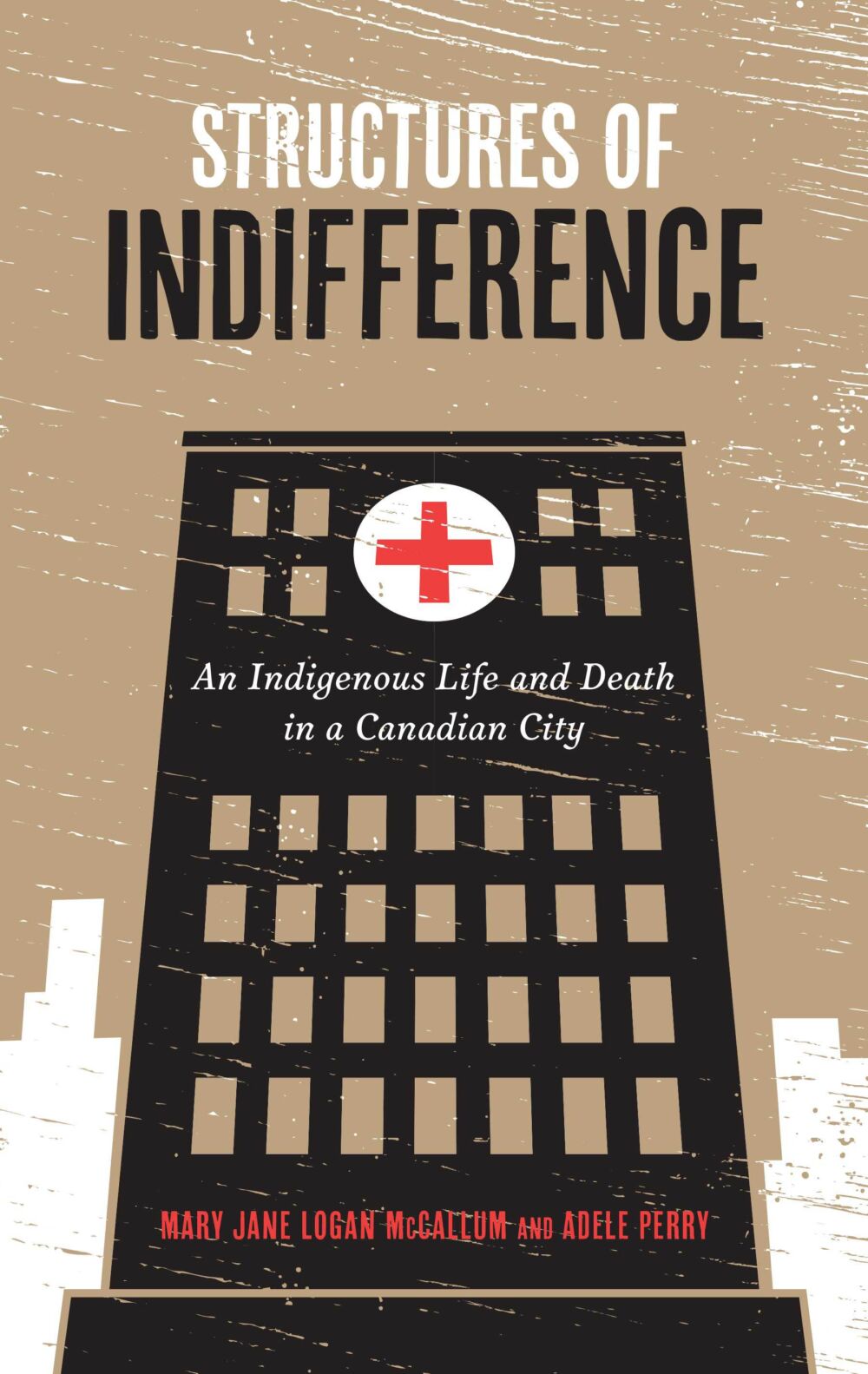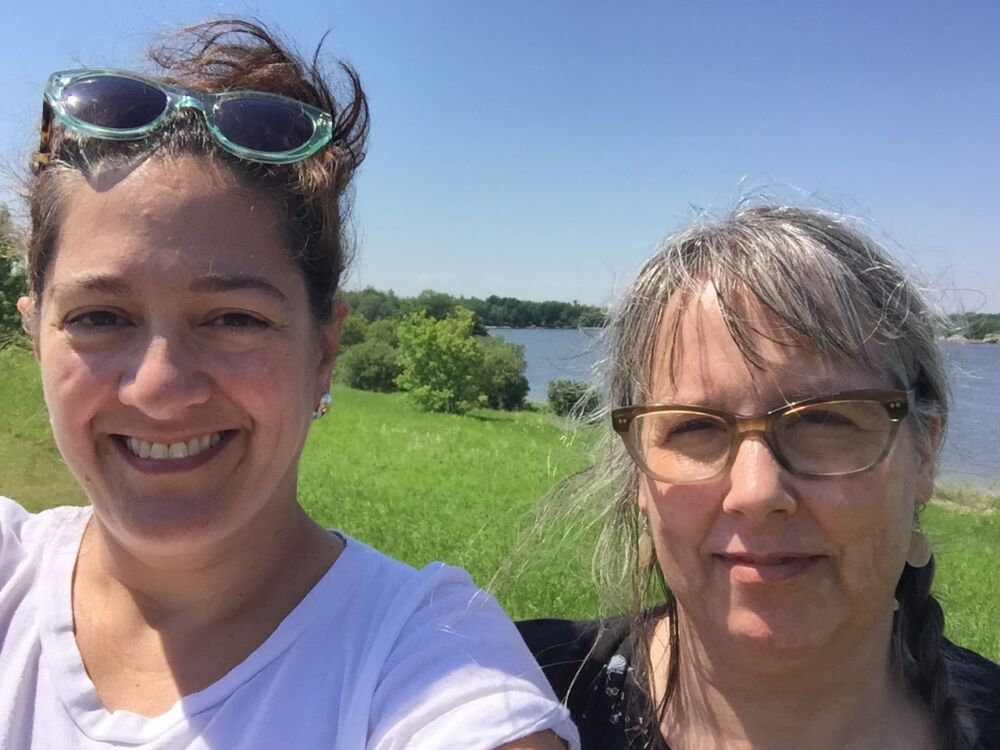Structures of Indifference examines an Indigenous life and death in a Canadian city and what it reveals about the ongoing history of colonialism. At the heart of this story is a thirty-four-hour period in September 2008. During that day and half Brian Sinclair, a middle-aged, non-Status Anishinaabe resident of Manitoba’s capital city, arrived in the emergency room of the Health Sciences Centre, Winnipeg’s major downtown hospital, was left untreated and unattended to, and ultimately died from an easily treatable infection. His death reflects a particular structure of indifference born of and maintained by colonialism.
Understanding Sinclair’s life and death within the context of 150 years of ordinary indigeneity in Winnipeg and Manitoba, this book completes the story left untold by the inquiry into his death, which omitted any consideration of underlying factors, including racism and systemic discrimination.
Mary Jane Logan McCallum, of the Munsee Delaware Nation, is a professor in the Department of History, University of Winnipeg, and the author of Indigenous Women, Work, and History, 1940–1980.
Adele Perry is a Professor of History at the University of Manitoba. She is the author of Aqueduct: Colonialism, Resources, and the Histories We Remember.
*


Excerpt from the “Introduction—Thirty-Four Hours”.
The specific mode of colonialism practised in modern Canada is settler colonialism. Settler colonialism is sometimes defined as a form of colonialism where settlers came to stay, but that is too simple a definition.
Mohawk scholar Audra Simpson explains that settler colonialism is at once an analytic, a social formation, an attitude, and an imaginary that helps us name “what happened and is still happening in spaces seized away from people, in ongoing projects to mask that seizure while attending to capital accumulation under another name.” Canadians are not used to this framing of their past as violent and ongoing. Until the last twenty-five years or so, Canadian history was written as a benevolent, peaceful, and largely natural progression from a resource-rich hinterland to a modern multicultural state. Indigenous people in such renderings of history have very little role—removed or erased from the land to facilitate settlement and resource extraction, they are “othered” by the newcomers who are the central protagonists in the story that is Canadian history.
As historians, we are wary of analyses of the past that are built on a premise of Indigenous decline and that can replicate an endless colonial logic. In this book, we work to question and challenge the commonplace assumptions of Indigenous absence and write about how the settler colonial logic of erasure persists and works even where Indigenous people are very much present.
Like other western Canadian cities where Indigenous people form a significant and growing part of the population, Winnipeg conforms to, departs from, and complicates wider continental and global practices of understanding and framing Indigenous experience. A 2016 census identified 12.2 per cent of Winnipeg’s population as First Nations, Metis, or Inuit. In this context, it is abundantly clear that for all the upheavals wrought by settler colonialism, Indigenous people remain in this space—real, unexceptional, and ordinary, and at times undeniably visible. Yet the standard set of cultural tropes that shape the representation of Indigenous people in modern North America play out differently here.
Historian Philip Deloria has written about “Indians in unexpected places,” persisting when presumed absent. Jean O’Brien has analyzed the way that discourses of Indigenous disappearance—of the “first” settler and the “last” Indian—structure the way we minimize Indigenous historical experience. These continental discourses and histories are part of the one we describe here, though the weight of local histories and presents adds specificity and demands attention to particular dynamics of place and time. Brian Sinclair was far from a singular or unusual Indigenous person in the HSC emergency ward, or downtown Winnipeg, on his last night in 2008. Sinclair was one man within a large and regular Indigenous presence in these spaces, and we must look beyond analyses that presume the rarity of the Indigenous person within settler colonial spaces to understand what happened to him and what we might learn from it.
While indigeneity is not analogous to race, Indigenous people can and do experience racism, and thinking about systemic racism is critical to understanding histories of Indigenous people, including those of individuals like Sinclair. One effect of anti-Indigenous racism is what we call structures of indifference. The structures of indifference that Brian Sinclair encountered—where he was literally ignored to death—is on regular display throughout Canada. It is not simply a manifestation of individuals holding negative or bigoted views of Indigenous people and treating them poorly; racist acts are qualitatively diverse and pervasive. It is also more than bald statistics that point to the poorer health, shorter lifespans, and lack of basic necessities experienced by Indigenous people. Racism influences people’s lives in ways that simply cannot be reduced to statistics and bullet points.
In this book, we bring some of the tools of history to contextualize racism in health care and, more specifically, Brian Sinclair’s death and inquest. We use generalized statistics, but we do so in ways that are grounded in critical Indigenous-centred and intersectional readings of specific contexts. We query the colonial frames of medicine and health that have produced Indigenous blood and bodies as special subjects of inquiry, intervention, and discipline and acknowledge them as structures that create and maintain inequities. We seek to understand racism not as a set of individually held beliefs or actions against a backdrop of history, but as a structure of indifference—one that shapes and produces life chances.
We seek to discern how structures support, enable, and inform putatively individual actions. And above all, we seek a more complicated, local analysis that is attentive to place and time. In the context of Winnipeg and Manitoba, and indeed Canada and other parts of the settler colonial world, oversimplified and nationalist histories must be understood for the role they play in the continuing practice of settler colonial structures. When we separate the history of people like Brian Sinclair and institutions like the HSC and cities like Winnipeg from the wider history of the dispossession of Indigenous people and land, we radically misunderstand and underestimate the context—the structures—that shape our lived experiences. We try to get beyond an unhelpful debate about whether it was individual or structural racism that killed Brian Sinclair. Rather, we insist that settler colonialism, and the structures of indifference that it produces and is maintained by, must be seen and accounted for here.
Colonization involved a much broader social, cultural, and political agenda that involved the organization of special services and programs for Indigenous people, including in the area of health. Colonization has had a physical impact on the health of Indigenous people—most obviously in the devastation of Indigenous populations through imported diseases—and it is now considered a determinant of Indigenous health. The colonial history of Indigenous health also involves the supplanting of Indigenous health and health care practices and the undermining of Indigenous knowledge related to health. The imposition of a limited and understaffed separate system of Indian Health Services, ensured that, while the health of Indigenous people declined and Indigenous health knowledge was being replaced, further colonization was justified, sustained; even applauded.
In Canada, our investment in racism is such that it serves to ensure the state and settlers’ continued access to land and a claim to sovereignty over it. That is, racism in Canada is tied to a historically rooted but also continuing practice of claiming and organizing Indigenous land and people. To acknowledge Indigenous people as equals in Canada would be to acknowledge the validity of Indigenous claims to territory and self-governance. It would also mean acknowledging that race—and more specifically white supremacy—is profoundly embedded in the ways in which our systems operate. A desire to mould Canada into a distinctly white settler state is evident, for example, in the dispossession, removal, and discipline of Indigenous people; the exclusion, segregation, and marginalization of people of colour; and the creation, recreation, and repetition of pervasive national narratives about Canada that valorize white settlement and governance.
Yet we understand racism also to be specific to time, place, and context. For example, in the medical field, racist practices are embedded in a long and nationwide history of racial segregation in hospitals, and notions of who is and who is not deserving of medical care and what that care might look like are intimately tied to political, economic, religious, technological, and cultural influence. The many ways in which racism is embedded in Canadian history, however, also show how, over time, cultural narratives can and do change, because history, and how we tell and understand it, is not static. There is indeed potential for change, which is why it is important to discuss longstanding systemic issues of racism in Canada.
Thinking about settler colonialism and intersectionality allows us to complicate an analysis of racism in spaces that may look desegregated and progressive, and maybe even Indigenous, and to see some of the ways in which Indigenous people experience cities like Winnipeg.
The story of Brian Sinclair’s life and death is one of an Indigenous man who was continually ignored in a space specifically designated to provide care. It tells us a great deal about Canadian health care, the city of Winnipeg, the province, and the country in which this tragedy occurred and the structures of indifference made and remade in and through our colonial past and present.
About Manitoba 150 Excerpts
May 2020 marks Manitoba’s 150 anniversary as a province of Canada. The Manitoba Act was passed by the Parliament of Canada and received Royal Assent on May 12, 1870, creating the Province of Manitoba. To celebrate, throughout the year we will be posting excerpts from some of our titles that touch on Manitoba’s history, people, and cultures.
Posted by U of M Press
June 30, 2020
Categorized as Excerpt, MB 150
Tagged anishinaabe, colonialism, community, health, health care, history, indigenous, manitoba, manitoba 150, mb 150, settler colonialism, winnipeg
Manitoba 150 Excerpt #2: Thrashing Seasons Unbecoming Nationalism wins the Ann Saddlemyer Award!
